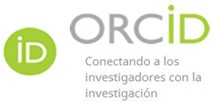Peer review process
All articles published in the Journal are previously submitted to review by its director and editor. Subsequently, they are sent to two content experts, depending on the subject they address, who evaluate it using the Open Peer Review method, to comply with the philosophy of the Open Science movement.revision guaranteeAuthors must submit their article with their personal information (name and surname, email address, ORCID code, academic affiliation and country).
Phases of the evaluation process of an article
Phase 1: sending the original.
Phase 2: evaluation by the editorial team of the journal of the submission received; it is analyzed with anti-plagiarism software (Urkund) and it is decided whether the work will be reviewed by experts or if it is discarded, either for formal or content reasons.
Phase 3: evaluation of the original by two experts in the corresponding subject area.
The editor or director sends the original to two content experts, with a copy to the authors, who will know who their reviewers are. The experts are asked to consider the following: adequacy of the work to the theme; presentation and writing of the text; originality and interest of the content; description of the central theme of the investigation; exposition of the theoretical-conceptual framework; adequacy of the methodology used; presentation and analysis of the results and conclusions; relevance of the bibliographical references; and adequacy of tables and figures.
The journal offers instructions and a form, which allows reviewers to assess the quality and relevance of the articles.
Phase 4: exchange and consensus between authors and/or reviewers.
The reviewers will exchange with the author(s) during this time. They will offer suggestions and assess the criteria issued by the authors. They can also trade with each other.
Phase 5: sending the evaluation result to those responsible for the journal.
The reviewers will issue a single document with the opinion and will send it to the editor of the journal and to the authors, who, in correspondence with the information given, will make the decision and decide whether to send the work to a third reviewer, when it is rejected by one of them; In this case, the director has the power to accept or not the article.
Acceptance: an article is approved if the evaluation result is positive and the editorial team considers that no change should be requested from the authors.
Non-acceptance: an article is rejected if the result of one or both evaluations is negative.
Modifications are required: the author must correct the suggested changes in order for it to be published with the required quality.
In the event that the author suggests a possible reviewer for his article, the journal reserves the right to take this recommendation into consideration or not.
Phase 6: socialization of the number.
The number is made available to the scientific community and readers and other authors will issue criteria about the published articles. Which will be taken into account for the publication of other contributions; by the same or other authors.










